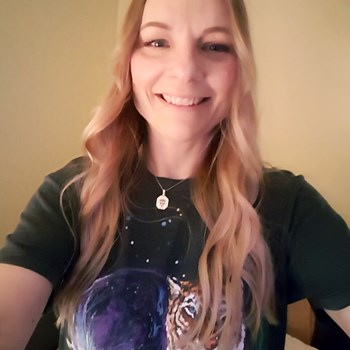The research behind rave and drug culture - Interview with Dr Karenza Moore
Wednesday, April 5, 2023
by Tat
Contemporary dance music and drugs have long had a symbiotic relationship. Without either the culture would not have flourished and developed into the many different vibrant scenes we see today. In the UK that relationship developed with each passing decade especially heralded with the invention of the teenager as a cultural force in the 1950s. Northern Soul’s dance floors were driven by Speed, illuminated disco nights with Cocaine and the height of the UK Acid House scene and its enduring love affair with Ecstasy. Subsequent scenes continued to experiment with new and old drugs, while authorities tried to restrict this massive youth movement through a variety of harsh laws and tactics. Nevertheless, even after a pandemic, the dance goes on. This incredibly rich ecosystem of chemicals and sounds have long been the interest of Dr Karenza Moore, of Newcastle University. Karenza’s area of research is club culture, after parties and the drugs that are consumed as part of it all. Not your typical academic, who invariably looks at a complex situation from the outside, but is someone fully invested in the dance music scene as a clubber with over a couple of decades living and breathing raves. In addition Karenza is one half of the DJ duo ZNK who play house, trance and techno across Manchester. We spoke to Karenza about her research on this most fascinating but also maligned topic.
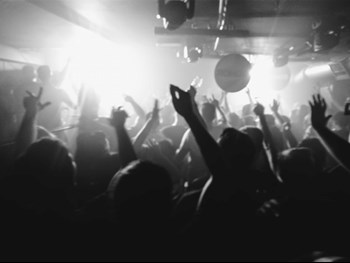
You’ve been into dance music for a couple of decades as a clubber and DJ, at what point did you realise that you wanted to explore the academic side of club culture?
It started really when I moved to Manchester, I was finishing my PhD in Sociology and by then I'd been clubbing for about 12 years. I’d got my first academic post and was finishing writing up my PhD, which was looking at young people's versions of the future in relation to different technologies. It had nothing to do with clubbing and raving.
There was a youth studies conference at the University of Surrey and I submitted a paper about going clubbing and that went down really well. It ended up getting turned into a book chapter about youth culture. When I came to Manchester I started going out again and started writing a little bit more about club culture and eventually carried out a project about Ketamine use. I found it very interesting and it set me off looking at drug use within rave and club culture. So it sort of started partly because I’d moved to a city where there was a really strong club scene.
Was there a catalyst that drove your interest in this research?
Yeah, probably. I used to go out in London when I lived there and whilst I was doing my PhD. I used to go to the likes of The Fridge and Brixton Academy. I didn't really think of it as something that you could study, but I guess as a sociologist I was interested in young people more generally, it was kind of a natural progression. Moving to Manchester helped and I found the scene there a really easy place to make friends because it's smaller than London. And there were a particular couple of nights that you go to every week, so you see the same people pretty much. That's not so much the case these days.
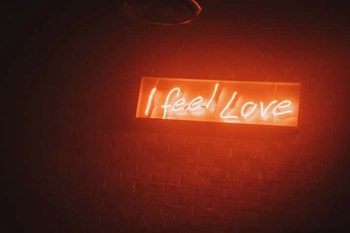
Underground and dance culture have always had a drug that to a large extent drove the scene, Northern Soul and Speed, Disco and Cocaine, Acid House and Ecstasy. Has that trend continued for subsequent generations, where one drug dominated over the rest?
That's a really good question because of the diversification of scenes. The first thing is that there’s a change in continuity in the scene. We wrote a paper over ten years ago called ‘MDMA powder, pills and crystal: the persistence of Ecstasy and the poverty of policy’, because one of the things we found when we were asking young people about the drug use at raves and clubs was that Ecstasy was still the number one associated drug with with rave culture. I actually think Ecstasy's got a very important role within rave culture. I don't think it would have happened the way it did without that specific substance, not to say that people were not doing other substances as well.
You also mentioned Speed and I think it's interesting that people sometimes forget that in the original acid house scene you would have seen Speed and LSD used, it wasn't only Ecstasy. I remember that Ecstasy was very expensive and Speed was a lot cheaper at the time so I think there was probably polydrug use going on in the rave scene right from the start.
Having said that, over the years Ecstasy has remained as popular. There's about a million doses of MDMA taken every weekend in the UK. That's quite astounding, Isn't it? That’s 500,000 regular users who take that specific substance at least once a month. MDMA has this really central place within dance culture but there's other substances that have come on.
One of the main things that we tracked was the rise of novel, psychiatry substances. About 15 years ago, the purity of MDMA declined and the market collapsed as the purity was coming in at about under 20%, but it recovered after 5 years or so. People did seem to go off MDMA a little bit and then there was Mephedrone/M-Cat which was sort of seen as a supposed replacement for MDMA, which it wasn't.
I think it's just really interesting, the relationship between dance music culture and MDMA/E. There's some interesting work at the moment looking at Ketamine and its rise within techno scenes, in particular, the UK. Ketamine has also got an important place in contemporary dance cultures.
Going back to the early 90s drugs like Speed maybe became more prevalent, because the music became harder and faster as well?
Yeah, I think you're right. I think that there's almost this kind of pharmacological specialism in terms of what substances link with different kinds of music. I think Ecstasy has always been there underneath, underpinning it all. For young people's drug use, MDMA has gone up and down but stayed relatively stable, but Ketamine since it was made illegal in 2005 has gone up quite significantly.
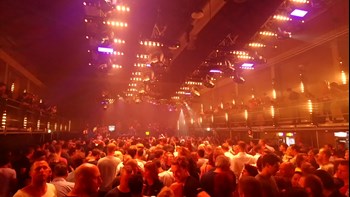
We know that alcohol consumption in young people has decreased across many countries, for various reasons, one being social media and that young people are wary of being caught out on film. There's loads of footage from Circa 87 to the early 90s where there's a lot of people off of their faces, who now hold down very important professional jobs. Do you think this is similar within club culture and drug use?
You see old rave photos from such as an M25 rave and everyone looks very young. Obviously they’re just very random people unless you know that person but now with the ability to tag people into photos and people's accounts I think that it's much easier to link an embarrassing photo to an actual person. And so I think that's the thing they do worry about a lot. Talking to young people, they do really worry about that. And the other thing is that alcohol is perceived as quite an old person's drug. Young people obviously do still drink but in terms of prevalence, alcohol use has gone down. In the last five years and particularly during and after the pandemic in the 16 to 24 year old range, it's gone right down. I also think it's a bit of a reaction against the binge drinking generation as well. Every generation wants to have their own thing. I also think during the pandemic there was quite a lot of talk about clubbing and there was coverage about illegal raids. There was this whole narrative about once we come out of lockdown the young people will be able to go clubbing again. They associated clubbing with freedom. I think it’s part of its enduring appeal. But definitely, in terms of alcohol I just think they don’t want to have an embarrassing photo on social media, so in a sense that's positive. You'll remember the dry raves and people didn't used to drink alcohol, full stop. We've gone to events in Manchester recently where there's a bar in this big warehouse project in Manchester and there's hardly anybody there at it. There’s also the cost of living crisis and people can drink at home if they want.
That dry thing caused a few problems in the early 90s when the club owners started turning the taps off as no one was drinking alcohol due to large-scale Ecstasy use. As a result people were getting badly overheated in the club.
Yes, I remember that. You’ll know, for years, there was a campaign about making it a legal requirement for venues to give drinking water to people. And that only came into force in about 2008/09. Although they don't turn the taps off nowadays, sometimes you have to really say, ‘Look I want and need some water’. You don't necessarily have to buy it, it is a legal requirement to be offered to clubbers.
On your website it says that you ‘contest simplistic notions of drugs’. Can you say a bit more about this?
It's in relation to drug myths and that there's a divide between substances that are legal, sanctioned and taxed and those that are illegal. So, alcohol and tobacco on one side and then there's other drugs that have been controlled. If you look at the history of prohibition, a lot of those drugs have been controlled because of the people that were taking them rather than the substance itself. The control of MDMA is a good example. There's still a lot of stigma around drug use and some of the language used within journalism. The language that gets used in mainstream media is concerning. There's always the language of ‘addiction’ or ‘being out of control, reckless’ and all the negative terms. The coverage of MDMA related deaths meant that there is this kind of real fear around that substance. So I want to question some of those myths with statistics and research - I think it is really important.
I suppose this goes back to the Criminal Justice Bill when the establishment often used a sledgehammer to crack a nut rather than have a mature conversation about drugs. Do you think that that will change?
No, and so to give you an example, I think it was April 2022 and I went to give evidence to the Home Affair Select Committee because they were looking at the Misuse of Drugs Act 1972. So the Misuse of Drugs Act is 50 years old and they were looking at the classification system and whether they could change it to maybe decriminalise for personal use. So a similar model to what Portugal has had for 20 years now. It's always framed as this weakening of drug laws, but really in a sense we do have really weak drug laws because they don't control the illegal market. It's really easy for young people to get hold of pretty much any substance they want and the market isn't regulated. So I've always got concerns about the fact that young people were buying and taking an unregulated substance. That's the kind of context for the conversation that we had at the Home Affair Select Committee. They had about eight sessions with various experts. We were all saying pretty much the same thing, that we need to decriminalise. We need to regulate, we need to change possession offences, the whole thing. Literally about a month later, the Government had what they called a ‘drugs conference’ announcing a new bill that they want to bring in. It was pretty much exactly the opposite of what every single expert had said and that they were increasing the penalties for possession. They weren't decreasing them and they're targeting young people rather than pulling back from stop and search, for example. So I don't think it's going to change in this country. We seem to be going in the opposite direction and lots of other countries particularly in Europe, but also other countries like Uruguay who have got a much more sensible drug policies than the UK. The current government seems to be going very much in a prohibition direction and everyone else is going the opposite way. Which is unsurprising given that it was also a Conservative government that brought into place the Criminal Justice Act.
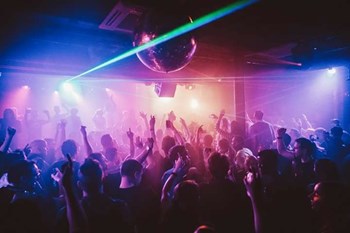
It feels very much. Like 2023 is really like 1993 and there's so many parallels to be had.
Yeah, I think young people had their leisure spaces taken away. I think it's interesting that we have loads of big festivals, we have nightclubs, but we still have illegal raves. That free party or rave organisers are still wanting to have that kind of space where there's a little bit more freedom. It's big in different parts of the country and I thought it was interesting that during the height of the pandemic there were those ‘Plague Raves’. People just want to dance together.
You are leading a piece of research called ‘Safer Partying’, can you tell me about this and are there any findings that you can share yet?
I started the project because I was thinking about what happens after a night out and that’s sort of where my interest in after-parties developed. I’ve been interested in harm reduction, and you'll know that there's drug testing going on now at festivals. But I was interested in what happens once a person leaves a rave or a nightclub, music space and later at parties in people's own houses. They’ve always been a part of rave culture but they're even more hidden in a sense. If you think about the fact that most people who arrive will be taking stimulants, then it's not like everyone goes home and then just goes straight to bed. And this sort of links in with the pandemic and when we were all stuck at home for everything including all of our leisure activities. It got me thinking about the home as a kind of leisure space. We have different kinds of parties at home, you might have a dinner party or you might have a house or student party. Student parties are a big part of student life and I just started thinking about harm reduction for after the rave.
How hard is it to conduct research into illegal drug use, as not everyone is going to admit that they are taking drugs, even anonymously?
It is hard. I think if you look at statistics from the Office of National Statistics in relation to drug use, which is a national general population survey. They've always said It's probably an underestimation. And you know that’s because there’s somebody knocking on your door and saying ‘I'm from the Office of National Statistics. Do you take drugs?’ I'd say that for any survey that you might do about drug use, you can probably assume it is a bit of an underestimation. Having said that, one of the things that's been really good over the years, is to go to the spaces where you know young people go to rave and take drugs. Although, you have to ask people quite early on because a few hours into the night as they may not remember what they've taken, so it’s best to get them as they come through the door.
I think if you explain to them that you're not taking their name and you're just interested in general data rather than them specifically, they’re OK with it. Sometimes you get to the point where people don't want to stop talking. We started conducting online surveys more because they are anonymous, you can tell people that you're not collecting their IP addresses. Also the interview or the focus groups where people talk among friends allow you to be part of that conversation and find out their understanding of the substances they take and how it relates to their raving. People are generally very open with me when I'm doing interviews, but I think that's related to all the reassurances that I give as part of a research project. Whereas I guess if people are just being asked without context that it makes it harder. The other interesting thing that came out recently as I was doing research about powder Cocaine use in Leeds and interviewing people in recovery. A lot of them said that they didn't really encounter the police, indeed most drug users will never have an encounter with the police and the authorities.
Do you think there has been a societal snobbery around drugs, in that it’s something that kids from council estates engage in; whereas we know the middle and upper classes heavily engage in illegal drug use?
It's interesting because if you think about middle class drug users, we’re talking about powder Cocaine specifically. Violence is related to the Cocaine market, particularly in the countries that produce it. It's also related to the huge profits that people who distribute it make. Certain substances like Magic Mushrooms and LSD don’t really have violence associated with their markets. A lot of the violence is related to the high profit margins and risk because it’s illegal and risky.
I agree, there's drug hierarchies and there's quite a lot of research on this and that drug use exists across all social classes. The Office of National Statistics did analysis by social class and young professionals rather than young people from council estates have got higher rates of recreational Class A drug use. I think there's a lot of snobbery and even gets down to the point of certain substances. A lot of young people at the moment are taking NOS Gas, which is those little balloon canisters. I think there's quite a stigma around that because it's such a young person's substance. The litter is really visible, and the government is planning to bring it under the Misuse of Drugs Act. I think a lot of that is around the stigma of certain substances especially if they're associated with certain groups of people and then obviously there’s a hierarchy over Heroin and Crack Cocaine. But then you've got alcohol versus recreational drugs. One of the first papers I wrote in 2004 was called E-heads Versus Beer Monsters and it was about the debate where Ecstasy users would be very disdainful about people that were using alcohol and alcohol users were very disdainful about Ecstasy users.
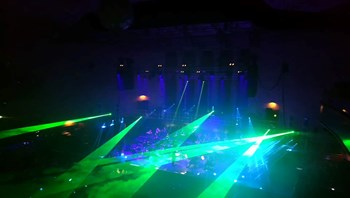
Your more recent studies looked at Ecstasy use and the stigma around it. I was part of a scene that fully embraced Ecstasy but because sadly there were deaths tied to the drug it led to intense pressure on by authorities. Yet at the time and even now, alcohol accounts for an awful lot more deaths per head of population. Culturally, alcohol is still regarded as very social and cool, there seems to be cognitive dissonance at play here?
I've given a talk in the past that said that about MDMA/Ecstasy. Ecstasy was illegal before rave happened, but we had the Criminal Justice Act 1994 and I argued that it's a criminalization of a cultural form, because they're linked in the culture in itself. But then you could say in the UK we have a very specific kind of drinking culture. We're quite odd in the UK about our approach to alcohol and actually, we're also a little bit odd in relation to our approach to drugs as well. The UK has got the highest rate of MDMA/E use in Europe per head. The country that comes second is the Republic of Ireland and the third country in that list is Spain. I think that says something about the UK and that our culture is quite hedonistic. I think that came out in binge drinking culture as well as rave culture , but I do think in terms of being culturally acceptable, alcohol is still much more culturally acceptable than MDMA/E.
It's fine to say that you're going to go out on a stag do or on a ‘bender’ or something with your drinking pals for a weekend. Then you come back into the office on a Monday and can describe the antics to everyone, but you can't do that if you've been out raving to techno for 24 hours. It's not the sort of thing you bring up at work on a Monday morning. A lot of people don't think of alcohol as a drug, so, one of the things I like to do with my students is to say ‘write down all the drugs you can think of’ and invariably some of them write down alcohol, but most of them don't.
The evidence across many European countries is that young people are drinking alcohol less. Is there much evidence whether drugs such as Ecstasy and Ketamine are increasing in popularity and whether these two things are linked?
We definitely know that young people's alcohol use is going down, and that's not just a UK thing. It's across the whole of Europe, which is really interesting, but we don't know if it's a displacement thing. It's just really hard to find out, but watch this space. I guess we'll be looking at that, but I'm actually really pleased that young people's alcohol use is down because it's linked to so many harms.
Do you conduct research out in the field so to speak, as I would imagine that would be quite interesting, in terms of research ethical approval etc?
Yes, it is and I’ve had some interesting experiences over the years and mostly in relation to my PhD students and trying to get their ethics approved. Universities are very worried about reputational ruin as they put it. I've had an ethics committee saying that if I saw drug use whilst I was carrying out surveys in nightclubs, that I should report it to the police. I went to see a colleague, who had been a police chief constable for 30 years and was an academic and asked what he thought if I went and reported drug use in a nightclub? And he just laughed and said he didn't think the police would take any further action. So I had to write that back to the ethics committee and let them know. The other issue is the use of social media, obviously now there's a lot more research that involves things like taking Snapchat pictures. My PhD student is looking at the student experience of clubbing during the pandemic and she was using Snapchat and had to go through this whole process with the ethics committee because they were concerned that it would be perceived as evidence. This was just in case there was a picture of someone taking a pill in the club. A lot of their concerns are just based on myths.
What further research have you got planned in this area?
I’ve got a couple of things coming up, with one of them being a Ketamine study. In 2025 it will be 20 years since Ketamine was made a Class C substance. It's now Class B, so we're seeing where we're at with Ketamine now. We're seeing quite a lot of Ketamine users alongside, or instead of MDMA/E use in techno scenes in the UK, or at least in England and Scotland. Then also we’re looking at post-event after-party research as well with Dr. Lisa Williams who's based at University of Manchester.
Finally, as someone who DJs and clearly loves the music and culture, what’s the killer tune in your sets?
At the moment, it's a tune by Amazingblaze and a track called Can't Stop on KNTXT
http://clubresearch.org/
http://clubresearch.org/publications-and-journals/
https://www.mixcloud.com/z-n-k/
https://www.mixcloud.com/karenzamoore/
Thanks to Dan for the club images.
Discover new digital dance music with Trackhunter


